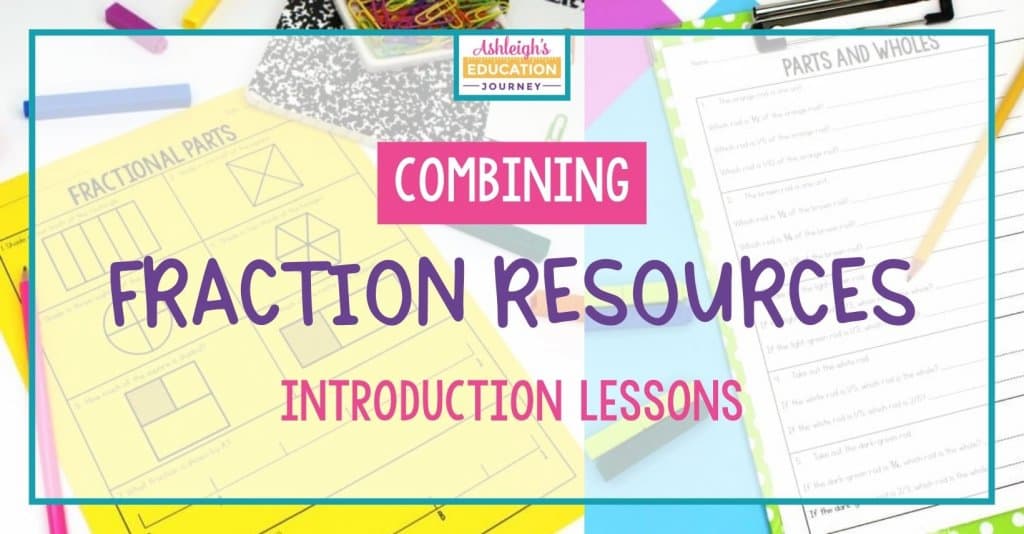
After finishing division, it’s time to move on to my fraction unit. With so many great resources available, it can be hard to pick and choose what works for your classroom. It can also be a challenge to determine how to incorporate all of your resources. In this series, I share my personal lesson plans to show you how I integrate my math resources. I start each section of the post with the weekly overview, and then I detail each part of the lesson.
You can see the place value post here. The multiplication post has been broken into two parts, because it’s a long unit! You can read Part 1 here and Part 2 here. You can find the division post here.
Jump to a week:
Week 1: Concept of Fractions
Even though students were introduced to fractions in second and third grade, I’ve found that reteaching general fraction concepts is essential. Before I can teach grade level standards, students need time to develop their fraction sense. Don’t expect that fraction sense to have developed prior to your fraction unit.
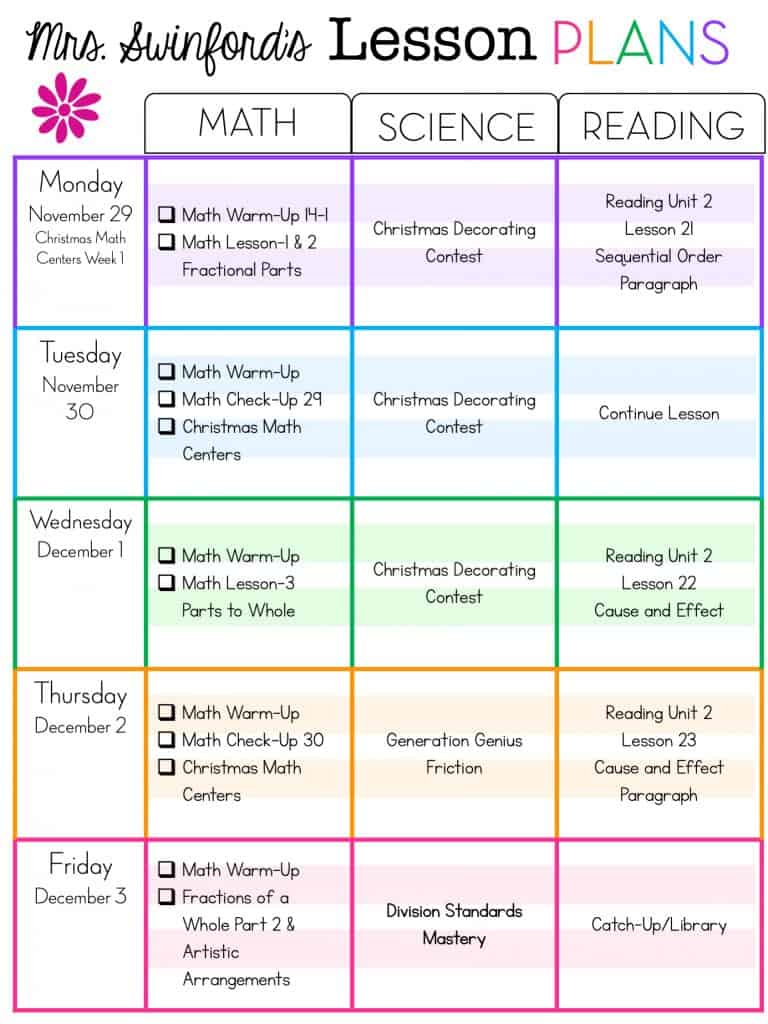
Math Warm-Ups
Fractions are pretty heavy in this week’s math warm-ups. The measurement word problem and number strings are still there, but the remaining activities focus on fractions.
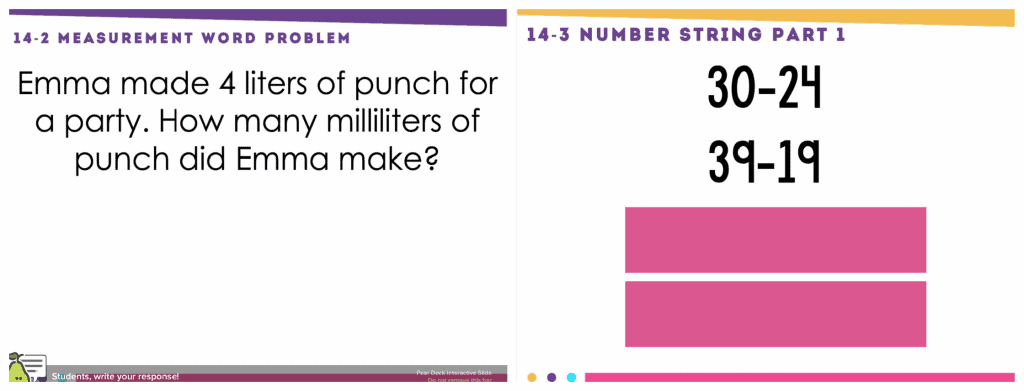
The quick image activity transitions to a fraction activity where students determine which models represent one-fourth of the whole. You can see how square C will likely trick students, especially at the very beginning of the fraction unit.
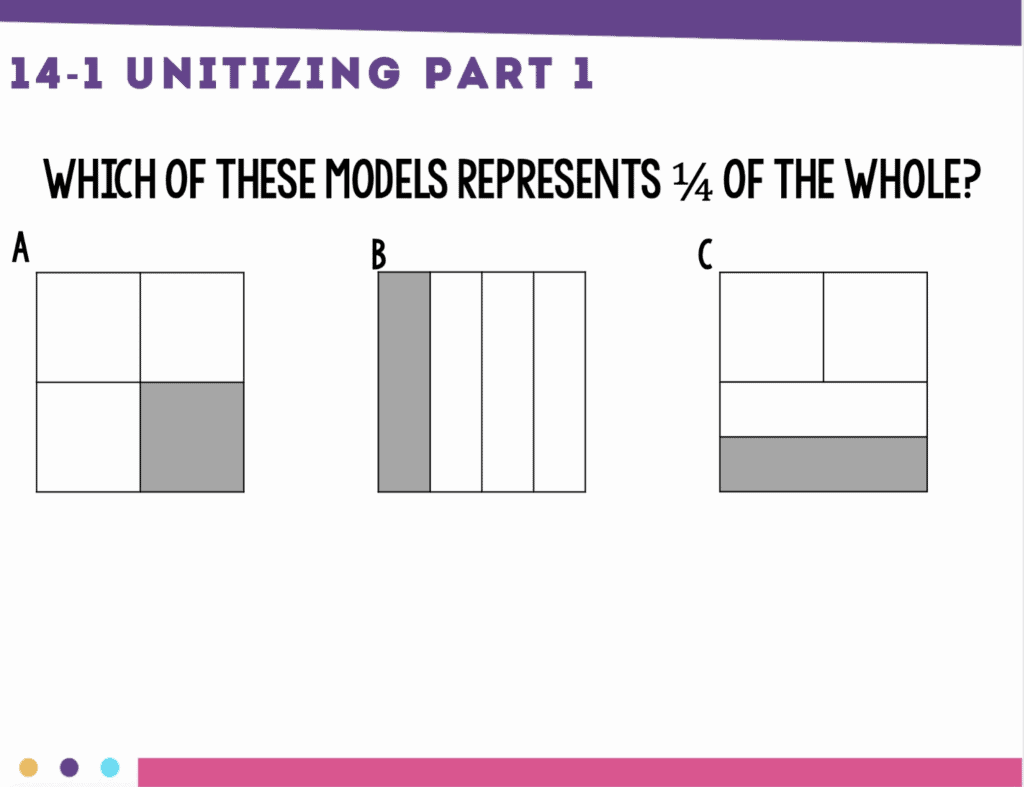
In a different activity, students determine what is one more and two more than two-thirds. Then the determine what is one less and two less than two-thirds. This seems so simple, but you’ll find that it will really challenge students’ thinking about fractions.
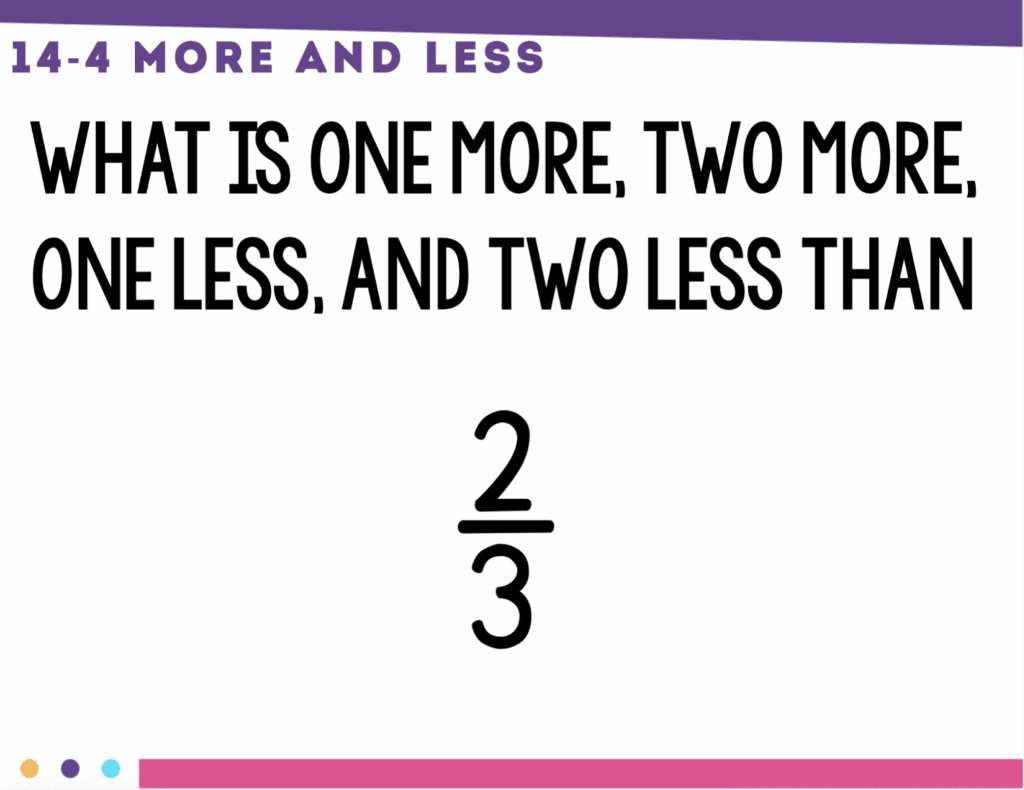
The count the room activity also focuses on fractions. Like working with whole numbers these fraction activities will progressively get more challenging.
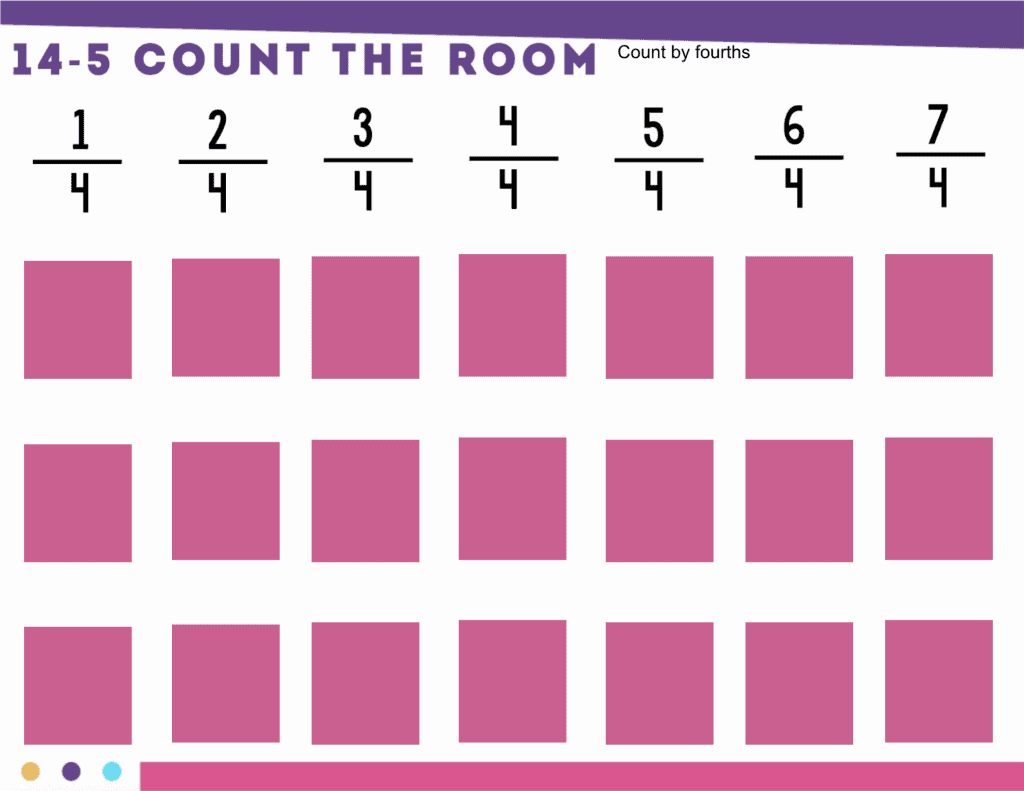
Math Check-Ups
While at this point in the year students have obviously, learned a lot more than multi-digit multiplication and division, that is the focus of the check-ups. By this point, all students (or the vast majority) shouldn’t have too much trouble with other concepts. I haven’t added fractions, yet. I want to give students time to have a couple experiences with fractions before adding them to the check-up.
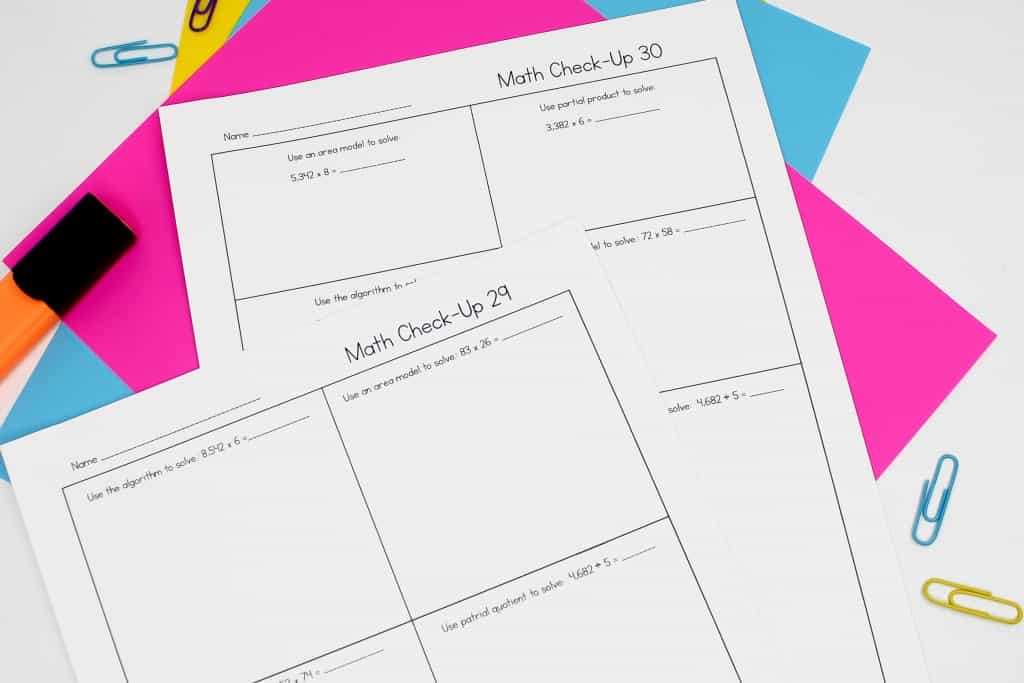
Math Centers
The math centers for the next three weeks review previously taught content. I intentionally did not include fractions. I want students to learn and develop their understanding of fractions through problem solving. At this point, they’re not ready for review or application. Students are still in the exploration phase of learning. I previously wrote about this set of centers here.
Fraction Lessons
When introducing fractions, students need ample experience exploring equal parts. There are often many misconceptions with this concept. Students have a tendency to solely count the number of parts, rather than think about the size of the whole and parts.
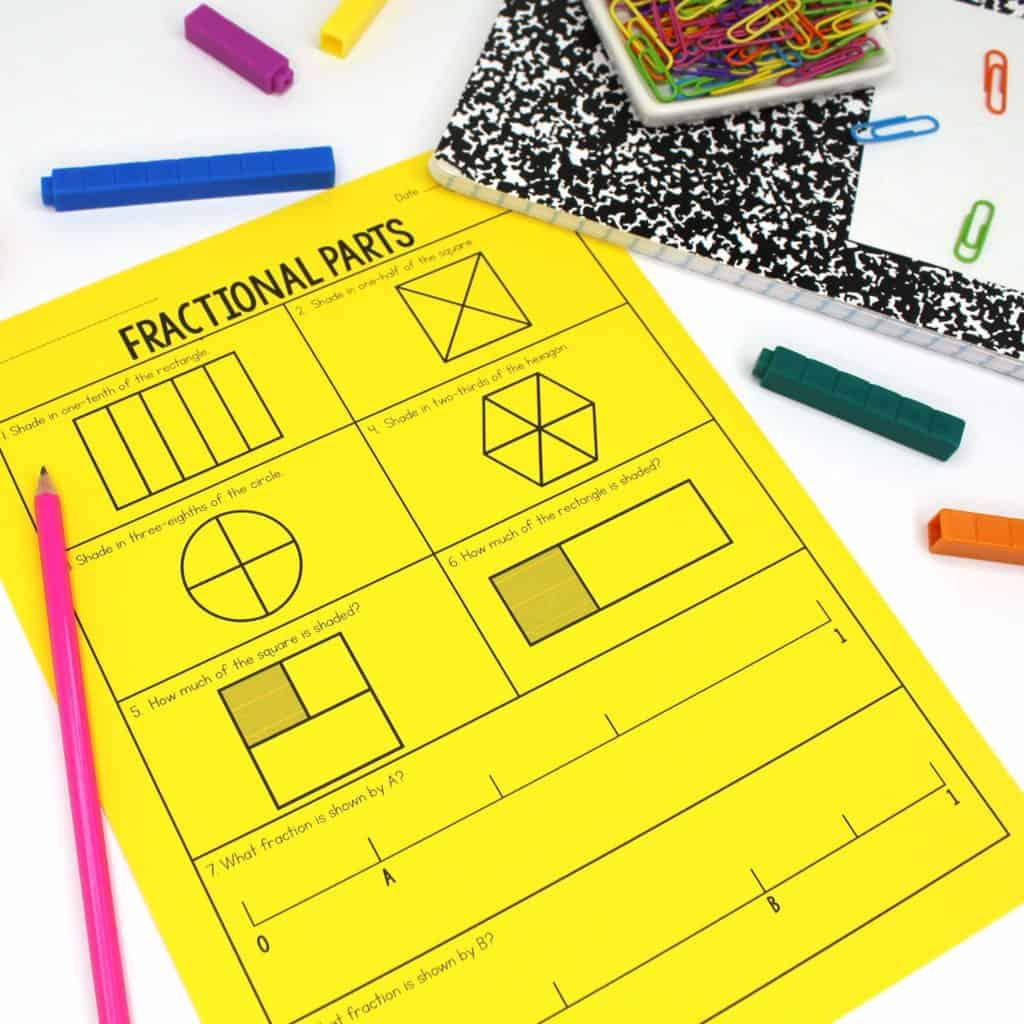
Cuisenaire Rods are by far my favorite fraction manipulative. By using different-length rods as the part and the whole, students develop their understanding that fractions such as 1/2 or 3/4 are not names for specific rods. Instead, they describe the relationship between the rod designated as the part and the rod designated as the whole.
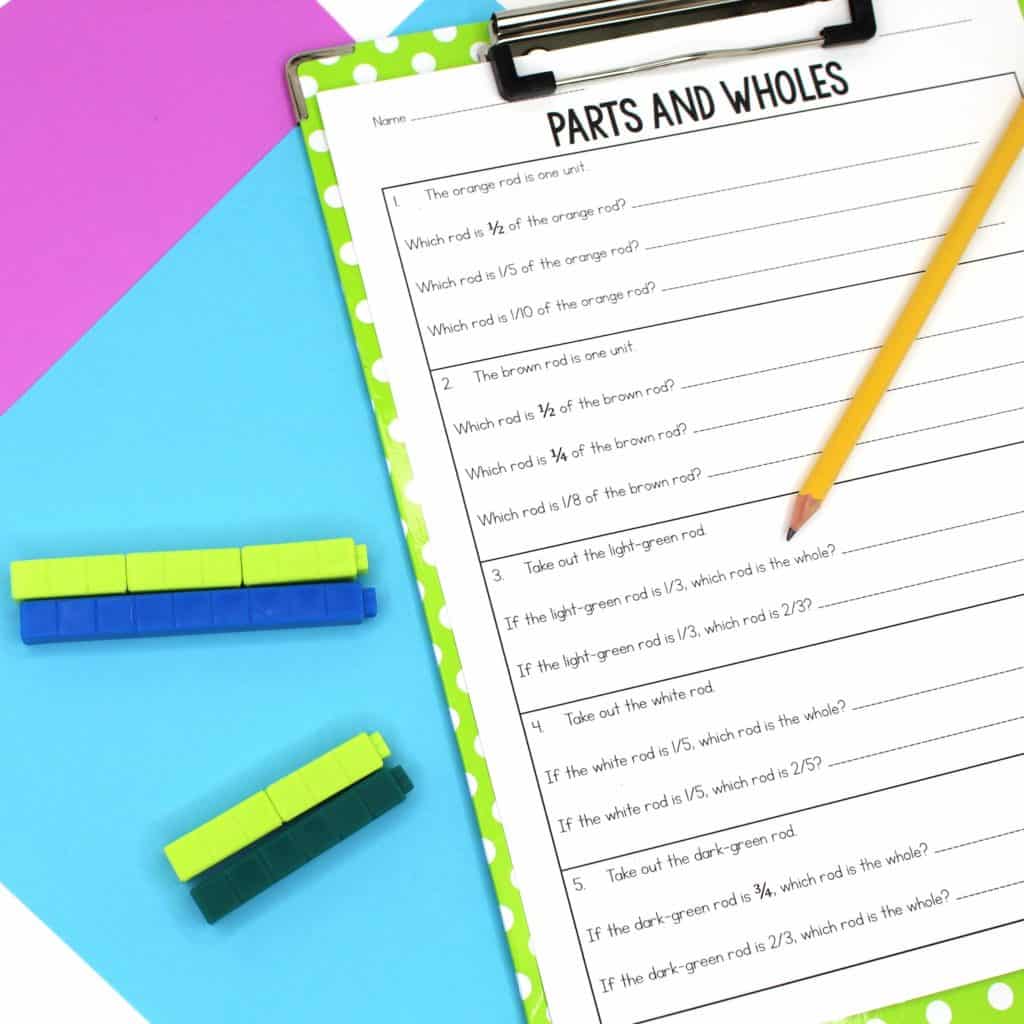
Before students begin to compare fractions, they need time to explore fraction size. For students to develop sound fraction sense, they must begin to reason about the size of fractions and fractional parts, especially in relation to benchmark numbers such as zero, one whole, and one-half. Even if students are face-to-face, I prefer the digital version of this lesson. Students can insert pictures of their virtual manipulatives to prove each of their answers.
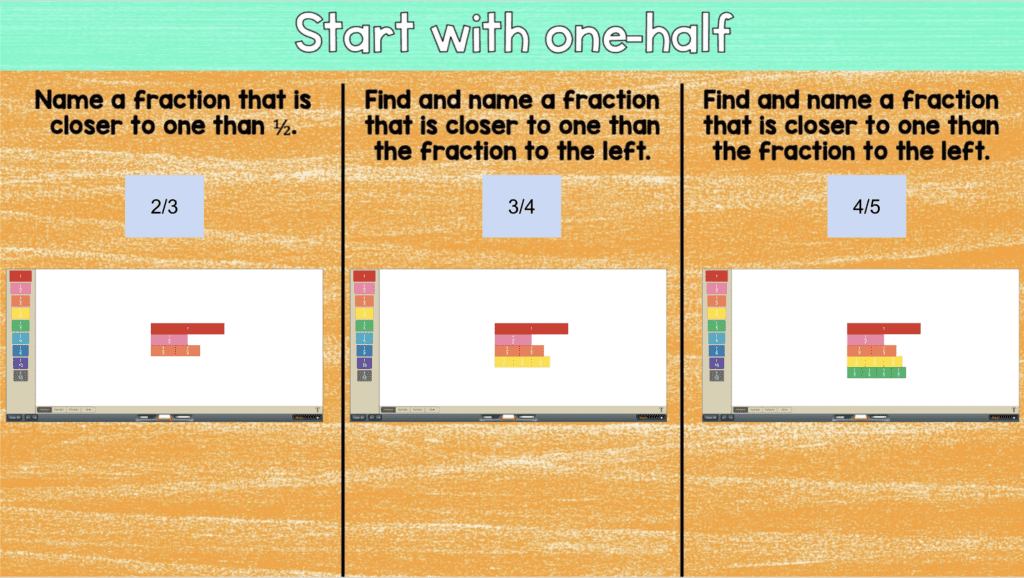
After students understand parts and wholes, they should begin to relate fractions to the idea of fair shares. This can also be a challenging concept for students. You can read more about introducing the concept of fractions here.
Week 2: Number Lines
This week students continue to develop an understanding of fractions. I’ve found that fractions number lines are often confusing for students. But, once they “see” it, the concept really clicks. Even though these are not specific to my grade level standards, I’ve found that starting slow helps speed the entire process.
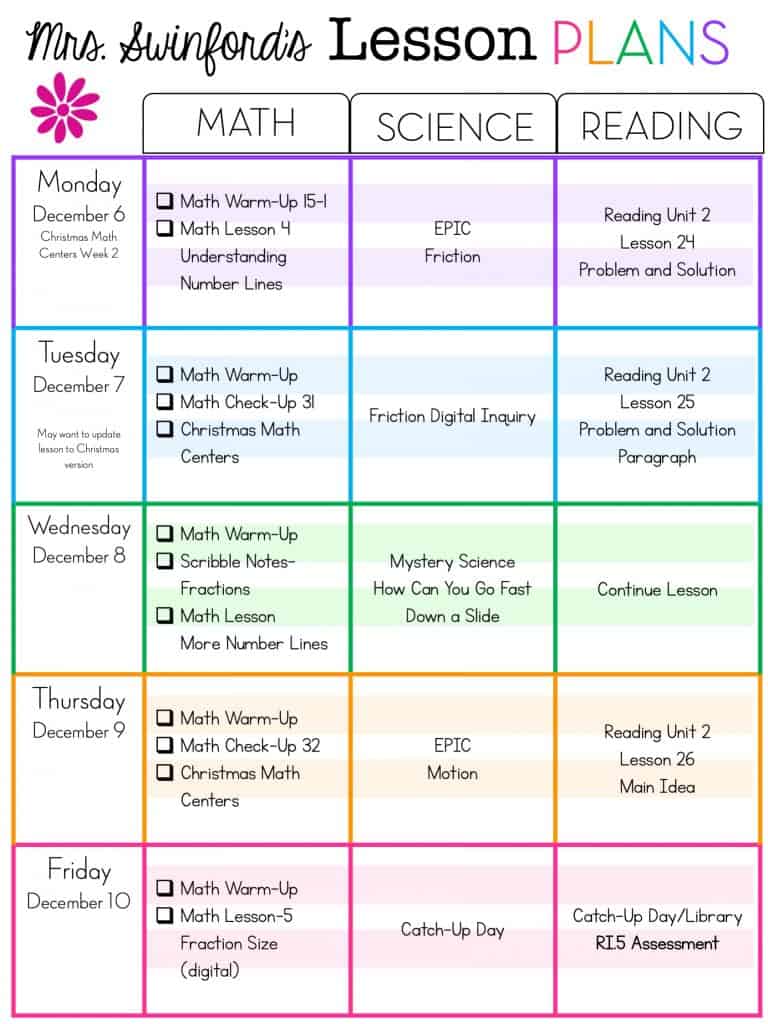
Math Warm-Ups
There are no new activities introduced in the Math Warm-Ups for the week. However, the level of difficulty of the problems continues to increase for students. The progression may seem slow, but if you stop and look at where students started, there is a significant difference.
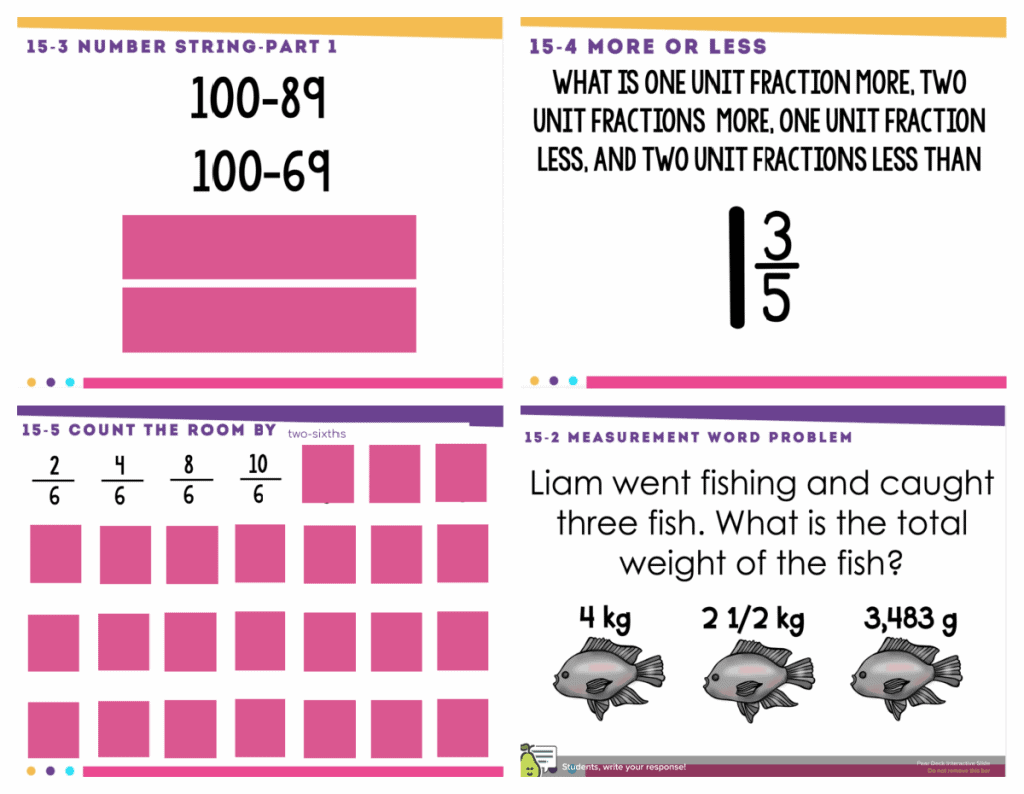
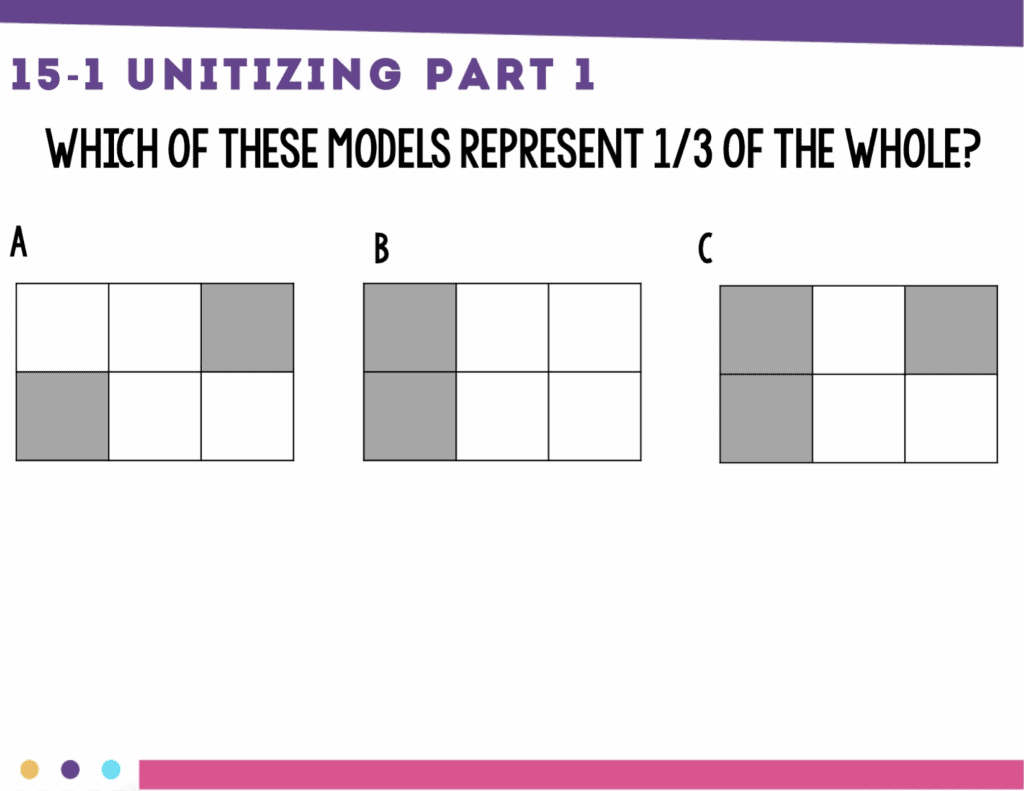
Math Check-Ups
The math check-ups continue to be short and sweet. I don’t want this to become something students dread or for them to take away from our instructional time.
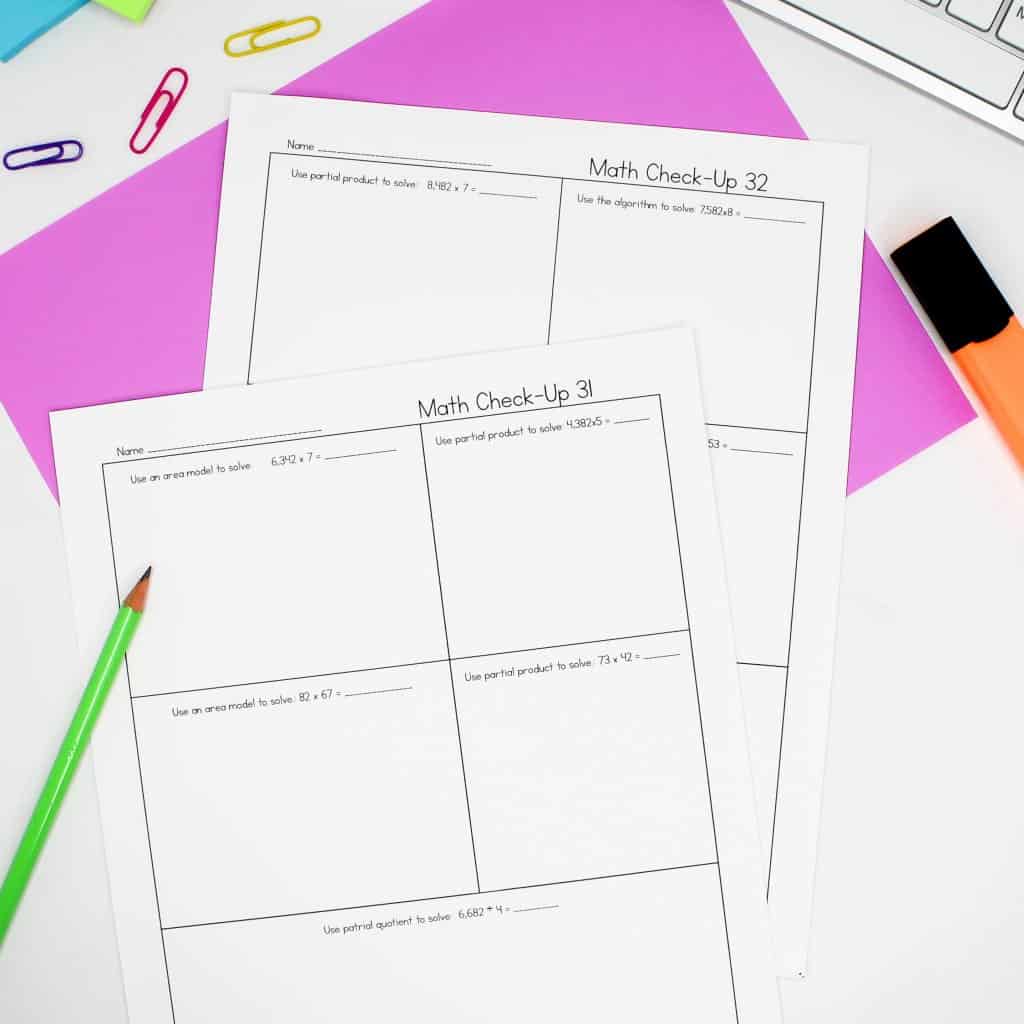
Scribble Notes
This week students add understanding fractions to their Scribble Notes. This highlights the essential concepts taught at this point in the unit.
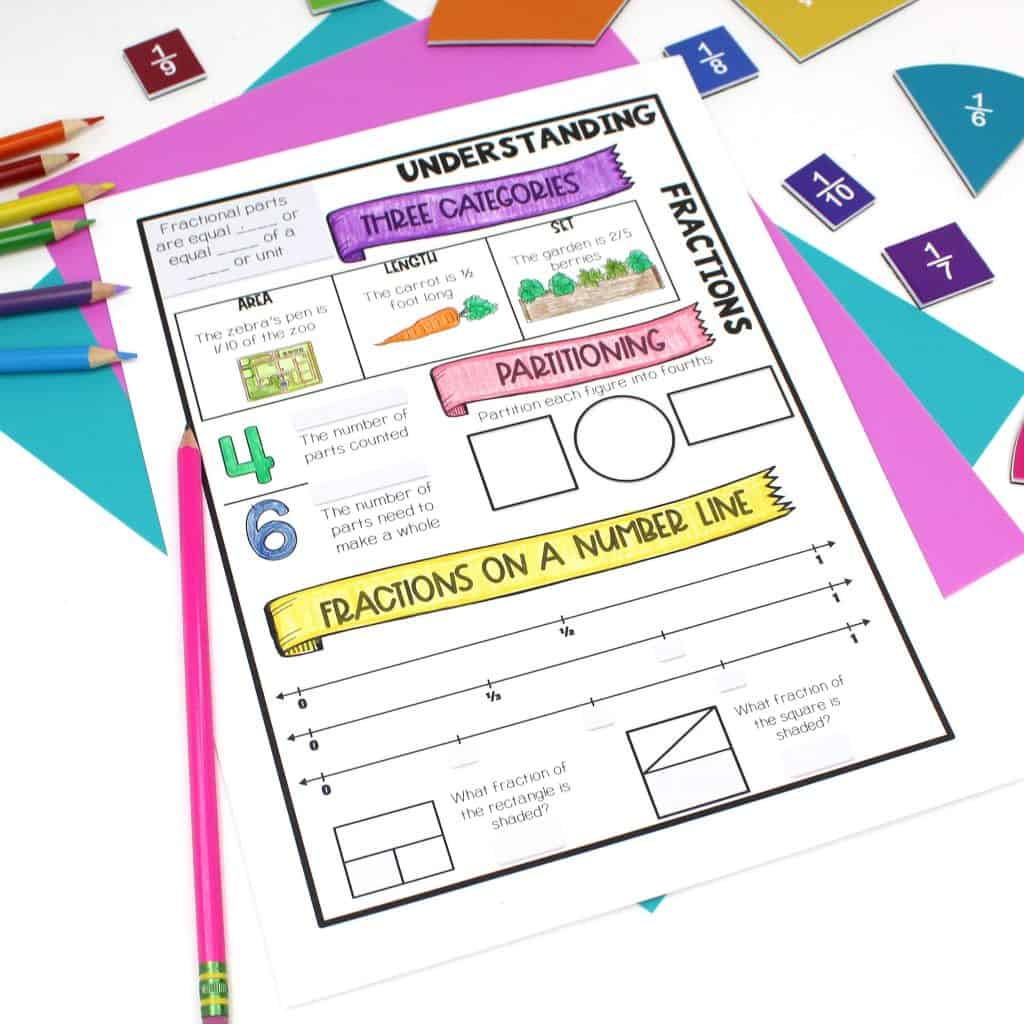
Fraction Lessons
Cuisenaire Rods are a great way to teach number lines. In the activity below, students use Cuisenaire Rods to build number lines. They used two pieces to create halves, three rods to create thirds, four rods to create fourths, etc. A common misconception was that students felt like the rods needed to fill the entire number line. They were under the impression that the number line dictated where the zero and one should be placed, rather than the value of the rods.
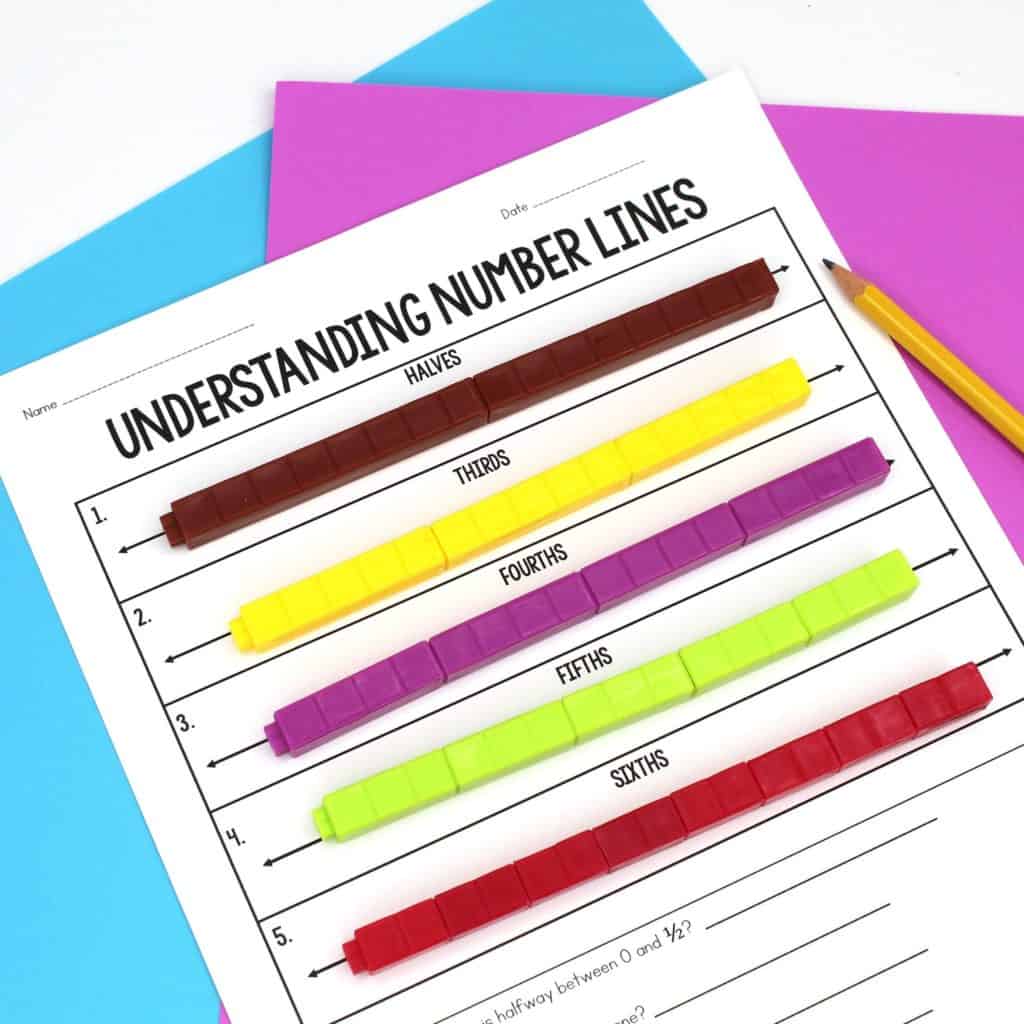
Another lesson for teaching fractions on a number line has students place given fractions and mixed numbers on a number line. You can use long construction paper, calculator tape, sentence strips, or taped together paper for this lesson. Students place the fractions on the TOP part of the number line and mixed numbers on the BOTTOM part of the number line.

A great way to review number lines is through this game-like activity that also reinforces the concept of unit fractions. You can see that I made my own dice. It’s not beautiful, but it works!
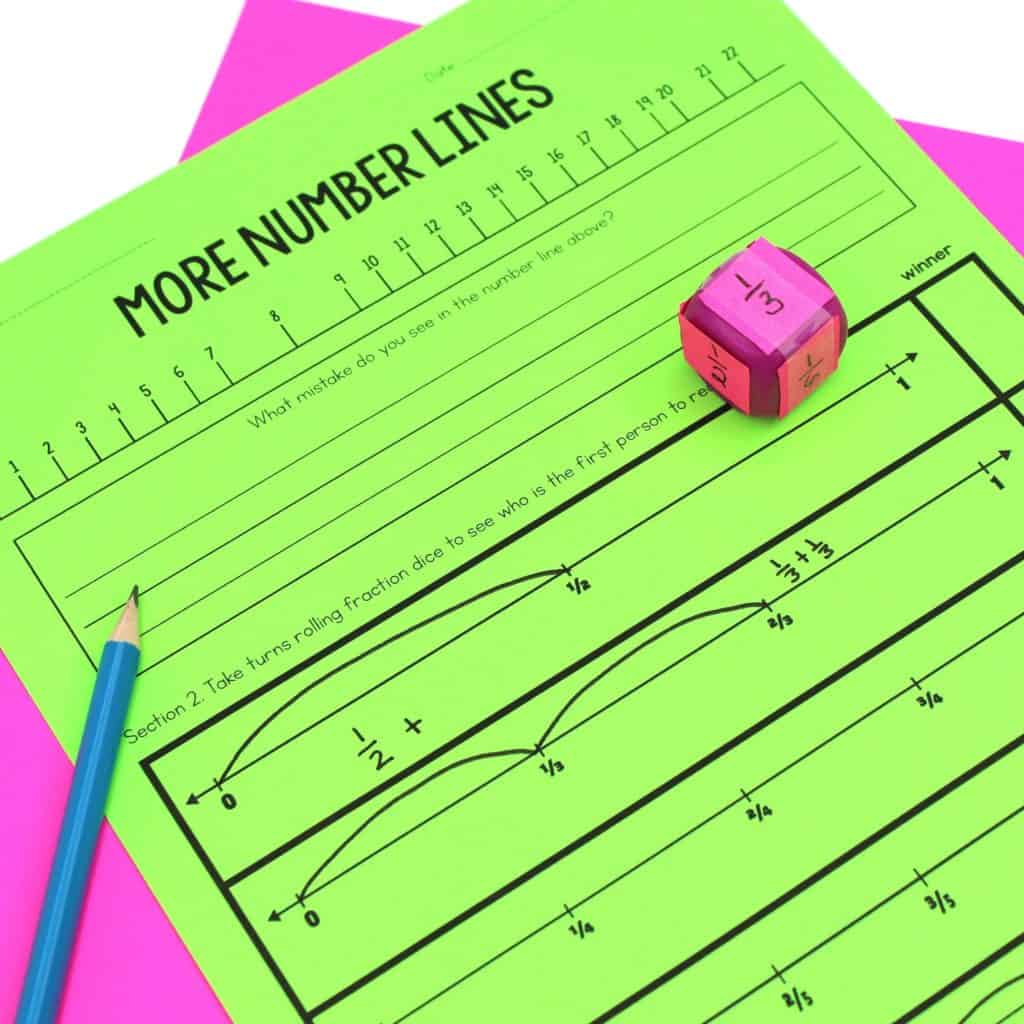
You can read more about teaching fractions on a number line here.
Week 3: Fractions Greater Than One
This week’s lesson is a great stopping place for our two week winter break. I’ll have finished teaching general fraction concepts and when we return to school in January, students will be ready for our grade level fraction standards.
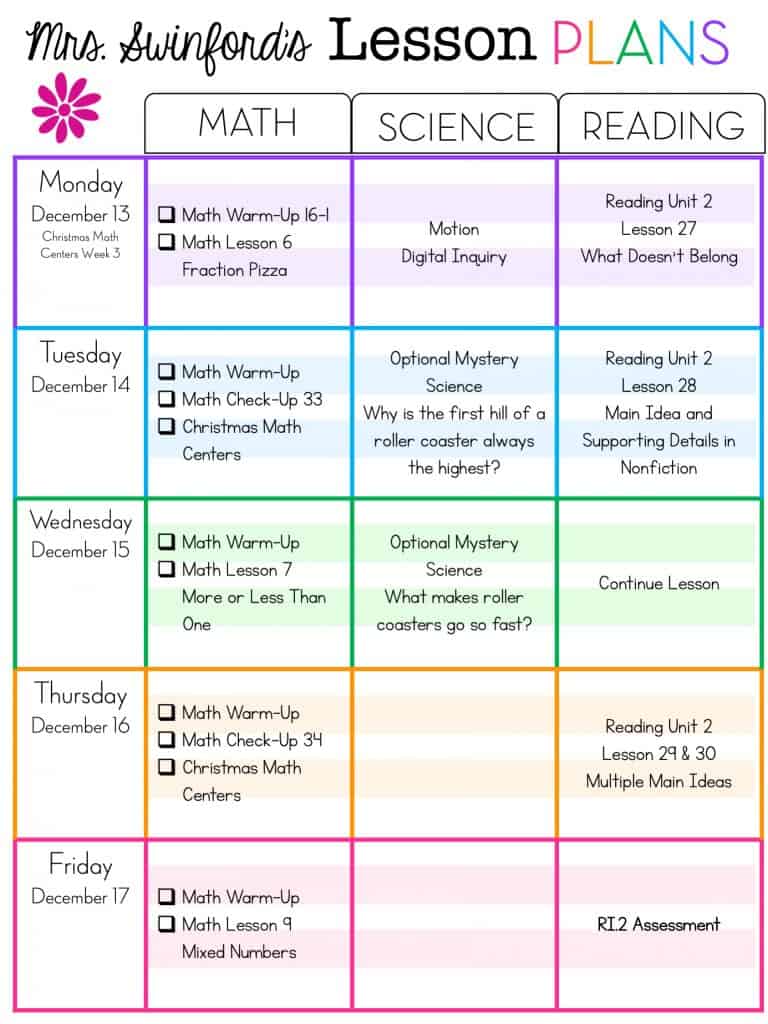
Math Warm-Ups
This week’s Math Warm-Ups continue to focus on fractions. There is still a number string activity and a measurement conversion word problem. The quick images begin to move students into multiplying fractions by whole numbers. The previous activities Which One Doesn’t Belong and Empty Number Line are reintroduced to the rotation.
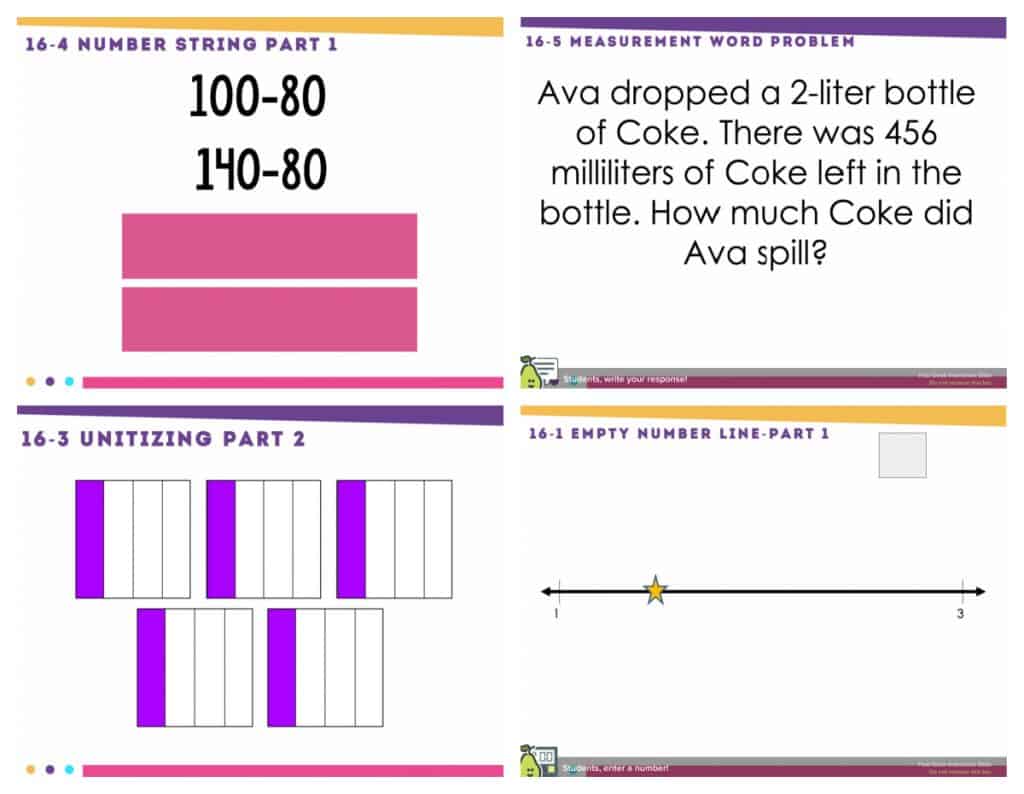
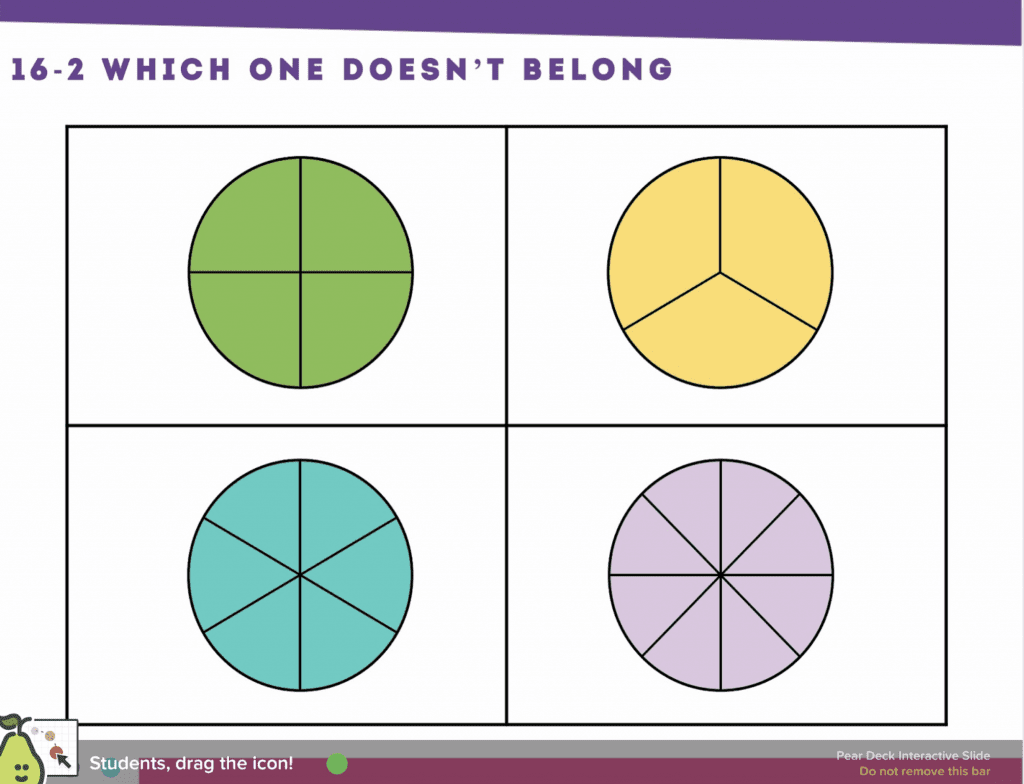
Math Check-Ups
This week’s math check-ups don’t introduce anything new. The focus continues to review multi-digit multiplication and division, as well as subtraction.
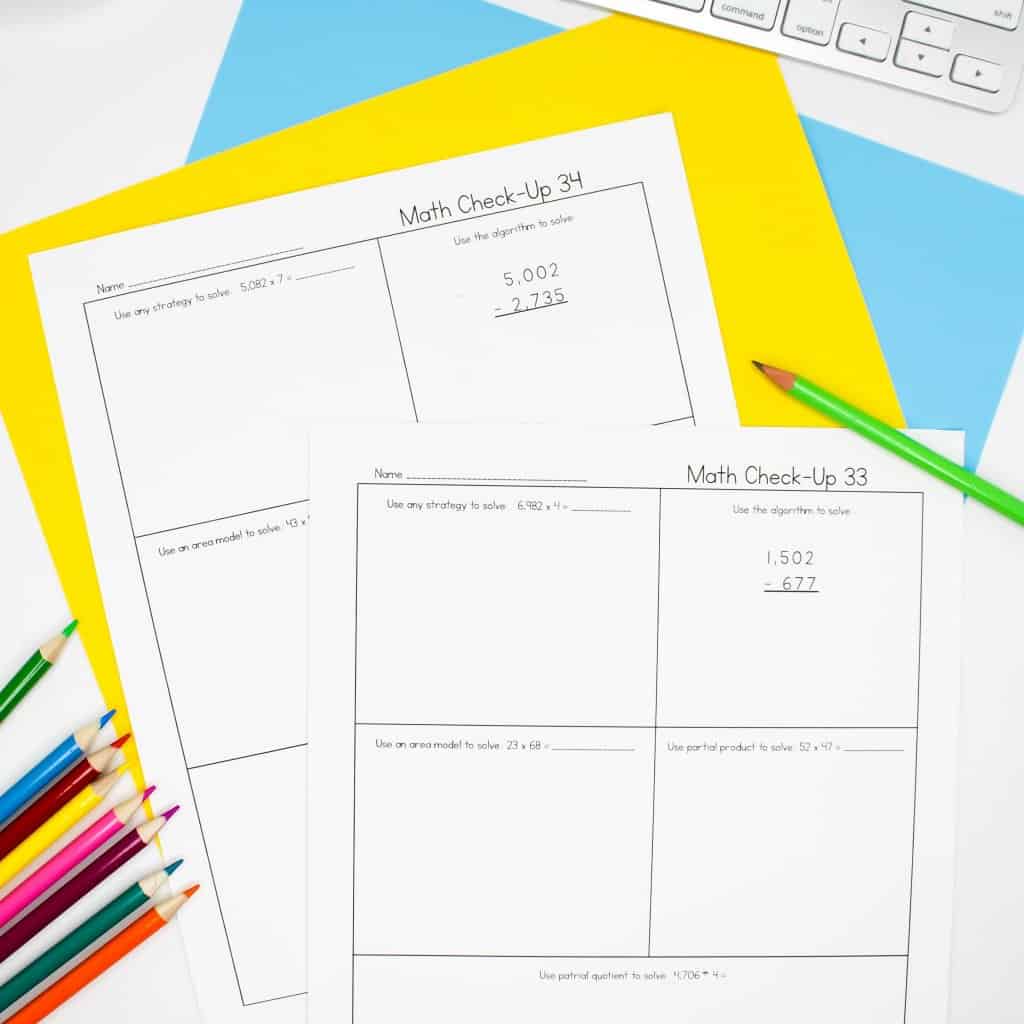
Scribble Notes
This week students add fractions greater than one to their Scribble Notes. They show how to convert mixed numbers to improper fractions (or fractions greater than one) and then improper fractions to mixed numbers. I wait until this has been conceptually introduced before we go over the rules.
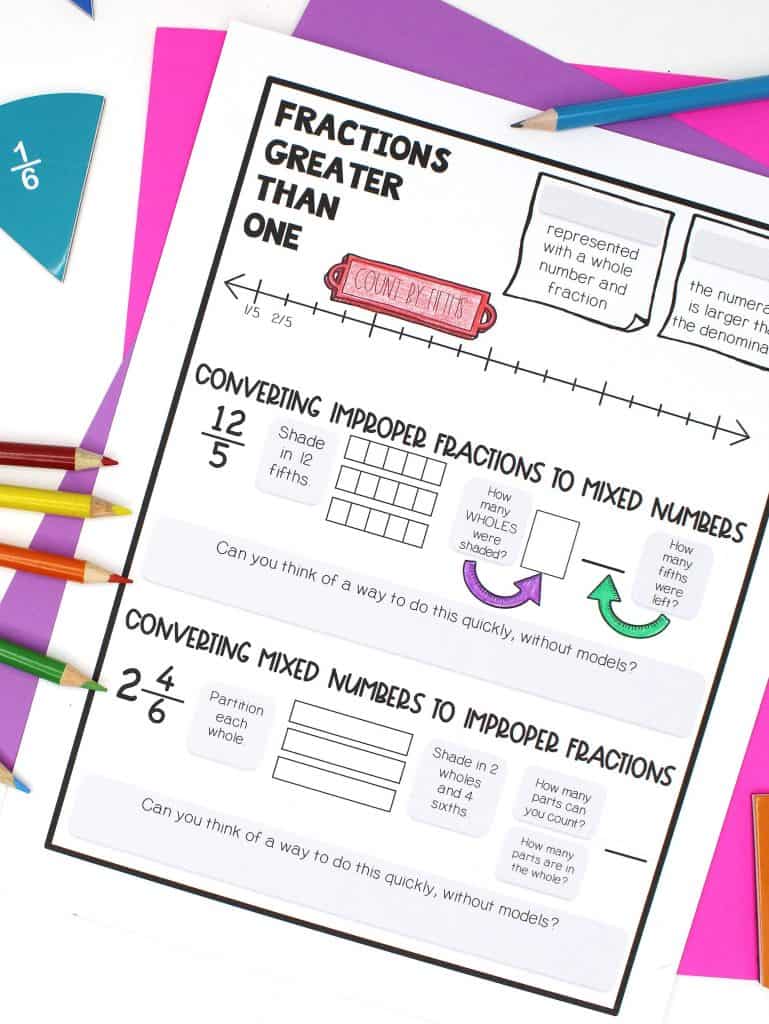
Fraction Lessons
In this pizza task, I intentionally included problems where there would be whole pizzas shared, as well as only fractional parts shared, because I don’t want to isolate mixed numbers into a unit of their own. Instead, I use this lesson to transition us into mixed numbers and fractions greater than one. Some students first share the whole items and distribute the leftovers, and other students slice every piece into equal parts and then distribute the pieces.
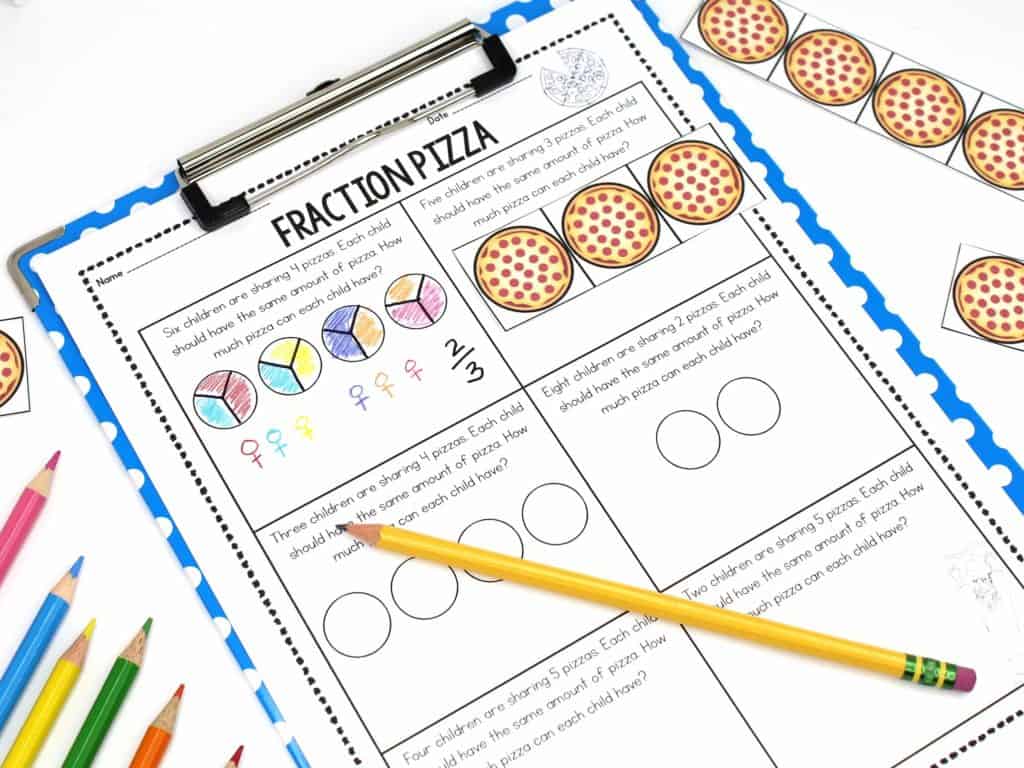
Another lesson for teaching fractions on a number line has students place given fractions and mixed numbers on a number line. You can use long construction paper, calculator tape, sentence strips, or taped together paper for this lesson. Students place the fractions on the TOP part of the number line and mixed numbers on the BOTTOM part of the number line. This can be challenging, because students need to pay close attention to the denominator of each fractions. Not only will students have to determine which whole numbers the fraction falls between but also what color rod to use to partition that section of the number line.

In the next part of this series, I’ll move into equivalent fractions and comparing fractions. This is when we get into the meat of the fourth grade standards.


